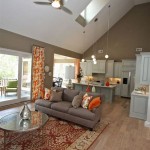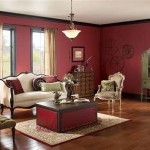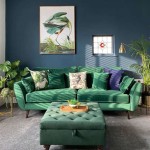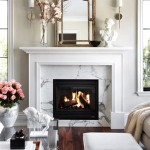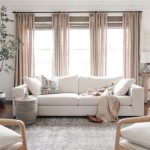Painting Ideas for Living Rooms: Transforming Your Space
The living room, often regarded as the heart of the home, serves as a central gathering place for family and guests. Its ambiance significantly impacts the overall feel of the house. A fresh coat of paint, strategically chosen, can dramatically alter the atmosphere, injecting personality, and creating a welcoming environment. Selecting the right paint colors and finishes, however, requires careful consideration of various factors, including room size, lighting conditions, existing furniture, and personal preferences. This article explores various painting ideas for living rooms, providing guidance on color selection, application techniques, and design considerations to help transform any living room into a visually appealing and comfortable space.
Understanding the Psychology of Color
Color psychology plays a crucial role in interior design. Different colors evoke different emotions and can influence mood, energy levels, and perception of space. Before committing to a particular color scheme, it is essential to understand the psychological effects associated with various hues.
Warm Colors: Colors like red, orange, and yellow are considered warm colors. They tend to create a sense of energy, excitement, and warmth. Red, for instance, can stimulate appetite and conversation, making it suitable for dining areas within the living room. Orange is associated with enthusiasm and creativity, while yellow brings a sense of optimism and happiness. However, warm colors, especially in their brighter tones, can be overwhelming in large doses. It's often best to use them as accent colors or in rooms with ample natural light to prevent them from feeling claustrophobic.
Cool Colors: Cool colors, such as blue, green, and purple, evoke feelings of calmness, serenity, and relaxation. Blue is often associated with tranquility and stability, making it a popular choice for bedrooms and living rooms intended for relaxation. Green symbolizes nature, growth, and harmony, creating a refreshing and balanced atmosphere. Purple, depending on its shade, can convey luxury, sophistication, or creativity. Lighter shades of cool colors can make a room appear larger and more airy, while deeper shades can create a sense of intimacy and drama. When using cool colors, it is important to consider the room's lighting. In dimly lit spaces, cooler tones may appear dull and lifeless. Introducing warm accents, such as throw pillows or artwork, can help balance the coolness and create a more inviting ambiance.
Neutral Colors: Neutral colors, including white, gray, beige, and cream, provide a versatile backdrop for any living room design. They are often used as base colors, allowing other colors and textures to take center stage. White is known for its clean and crisp appearance, making a room feel brighter and more spacious. However, stark white can sometimes feel sterile, so it's often best to pair it with warmer accents and textures. Gray offers a sophisticated and contemporary feel, with a wide range of shades to choose from, from light and airy grays to deep and moody charcoals. Beige and cream provide warmth and comfort, creating a welcoming and inviting atmosphere. Neutral colors are highly adaptable and work well with various design styles, from modern and minimalist to traditional and rustic. They also provide a blank canvas for showcasing artwork, furniture, and accessories.
Selecting the Right Paint Technique and Finishes
Beyond color selection, the painting technique and finish chosen significantly impact the overall look and feel of the living room. Different finishes offer varying levels of sheen, durability, and maintenance requirements. Understanding these attributes is crucial for selecting the appropriate finish for each surface within the living room.
Matte Finish: A matte finish has very little to no sheen, creating a flat and non-reflective surface. It is excellent for concealing imperfections on walls, such as dents, scratches, and uneven textures. Matte paint is also ideal for creating a soft and elegant ambiance. However, it is less durable and more difficult to clean than other finishes. Matte finishes are best suited for low-traffic areas and walls that are not frequently touched. They are often used in formal living rooms or areas where a sophisticated and understated look is desired.
Eggshell Finish: An eggshell finish has a slightly higher sheen than matte, resembling the subtle luster of an eggshell. It offers a good balance between aesthetics and durability. Eggshell paint is more resistant to stains and easier to clean than matte, making it suitable for living rooms that experience moderate traffic. It also provides a smoother and more refined appearance than matte. Eggshell is a versatile finish that works well in a variety of living room styles, from traditional to contemporary. It is a popular choice for walls that require occasional cleaning but do not need the high durability of a semi-gloss or gloss finish.
Satin Finish: A satin finish has a noticeable sheen, providing a smooth and velvety appearance. It is more durable and easier to clean than eggshell, making it a good choice for living rooms that experience high traffic or have children and pets. Satin paint is also resistant to moisture, making it suitable for bathrooms and kitchens that are connected to the living room. However, satin finishes can highlight imperfections on walls, so it is important to prepare the surface properly before painting. Satin is a versatile finish that works well in various living room styles, from modern to transitional. It is a good choice for walls, trim, and doors.
Semi-Gloss Finish: A semi-gloss finish has a high sheen, providing a durable and easy-to-clean surface. It is ideal for areas that are frequently touched or exposed to moisture, such as trim, doors, and window frames. Semi-gloss paint is also resistant to mildew, making it suitable for bathrooms and kitchens. However, semi-gloss finishes can be highly reflective, highlighting imperfections on walls and creating glare. It is important to use them sparingly and in areas where durability and ease of cleaning are priorities. Semi-gloss is often used in conjunction with other finishes, such as matte or eggshell, to create a contrasting and visually appealing effect.
Gloss Finish: A gloss finish has the highest sheen, providing a highly durable and easy-to-clean surface. It is ideal for areas that require maximum durability and resistance to moisture, such as kitchen cabinets, furniture, and metal surfaces. Gloss paint is also highly reflective, creating a dramatic and eye-catching effect. However, gloss finishes can be very unforgiving, highlighting imperfections on surfaces and creating glare. It is important to use them sparingly and in areas where a bold and modern look is desired. Gloss is often used as an accent finish, adding a touch of shine and sophistication to specific elements within the living room.
Incorporating Design Elements and Color Schemes
The successful integration of paint colors into a cohesive design scheme is paramount to achieving a visually appealing and harmonious living room. Consideration must be given to existing furniture, flooring, lighting, and architectural features to create a balanced and aesthetically pleasing space.
Monochromatic Color Schemes: A monochromatic color scheme involves using different shades and tints of a single color. This creates a sophisticated and calming ambiance, often associated with elegance and simplicity. For example, a living room could be painted in various shades of gray, ranging from light and airy grays on the walls to deep charcoal gray on the trim and furniture. Accents in silver or chrome can further enhance the monochromatic effect. When using a monochromatic color scheme, it is important to incorporate textures and patterns to add depth and visual interest. Different fabrics, such as velvet, linen, and wool, can create a richer and more layered look. Artwork and accessories in complementary textures and colors can also provide pops of interest and prevent the space from feeling monotonous.
Analogous Color Schemes: An analogous color scheme involves using colors that are adjacent to each other on the color wheel. This creates a harmonious and balanced effect, often associated with nature and serenity. For example, a living room could be painted in shades of blue, green, and teal. This color combination evokes a sense of calmness and tranquility, making it ideal for relaxation and contemplation. Analogous color schemes are generally easy to work with, as the colors naturally complement each other. However, it is important to choose one dominant color and use the others as accents. Using too many colors in equal proportions can create a chaotic and overwhelming effect.
Complementary Color Schemes: A complementary color scheme involves using colors that are opposite each other on the color wheel. This creates a vibrant and energetic effect, often associated with excitement and drama. For example, a living room could be painted in shades of blue and orange. This color combination creates a striking contrast, drawing attention to specific features and creating a sense of visual interest. Complementary color schemes can be challenging to work with, as the colors can clash if not used carefully. It is important to choose one dominant color and use the other as an accent. Using too much of both colors can create a visually jarring effect.
Triadic Color Schemes: A triadic color scheme involves using three colors that are evenly spaced on the color wheel. This creates a balanced and harmonious effect, often associated with creativity and playfulness. For example, a living room could be painted in shades of red, yellow, and blue. This color combination is vibrant and energetic, making it ideal for stimulating conversation and creativity. Triadic color schemes can be challenging to work with, as the colors can appear overwhelming if not used carefully. It is important to choose one dominant color and use the others as accents. Using too much of all three colors can create a visually chaotic effect. Incorporating neutral colors, such as white, gray, or beige, can help balance the vibrancy of the triadic color scheme.
Accenting with Trim and Architectural Features: Painting trim, moldings, and architectural features in contrasting colors can significantly enhance the visual appeal of a living room. For instance, painting the trim a crisp white against a wall painted in a deep blue can create a striking contrast and highlight the architectural details. Similarly, painting a fireplace surround in a different color can draw attention to it and make it a focal point of the room. The choice of trim color should complement the overall color scheme of the living room. White and off-white trim colors are versatile and work well with a variety of wall colors. However, bolder colors, such as black or navy blue, can add drama and sophistication to the space. When painting architectural features, it is important to consider the existing style of the room. In a traditional living room, ornate moldings and cornices can be highlighted with contrasting colors to emphasize their intricate details. In a modern living room, clean lines and minimalist design can be enhanced with subtle variations in color and texture.

7 Charming Wall Painting Ideas For Living Room

10 Wall Colour Paint Ideas To Make Your Living Room More Pleasant

7 Living Room Painting Ideas The Ultimate Guide

45 Creative Wall Paint Ideas And Designs Renoguide N Renovation Inspiration

Living Room Paint Ideas To Spruce Up Your Home Designcafe

9 Amazing Living Room Paint Ideas For An Affordable Makeover Décor Aid

30 Living Room Paint Colors Inspiration For An Inviting Space Beamin Moore

74 Best Living Room Paint Color Ideas For 2025

House Design With Paint 10 Radiant Colors For Your Living Room Weiken Interior

3 Unique Painting Ideas For Your Living Room Gleco Paints Blog

